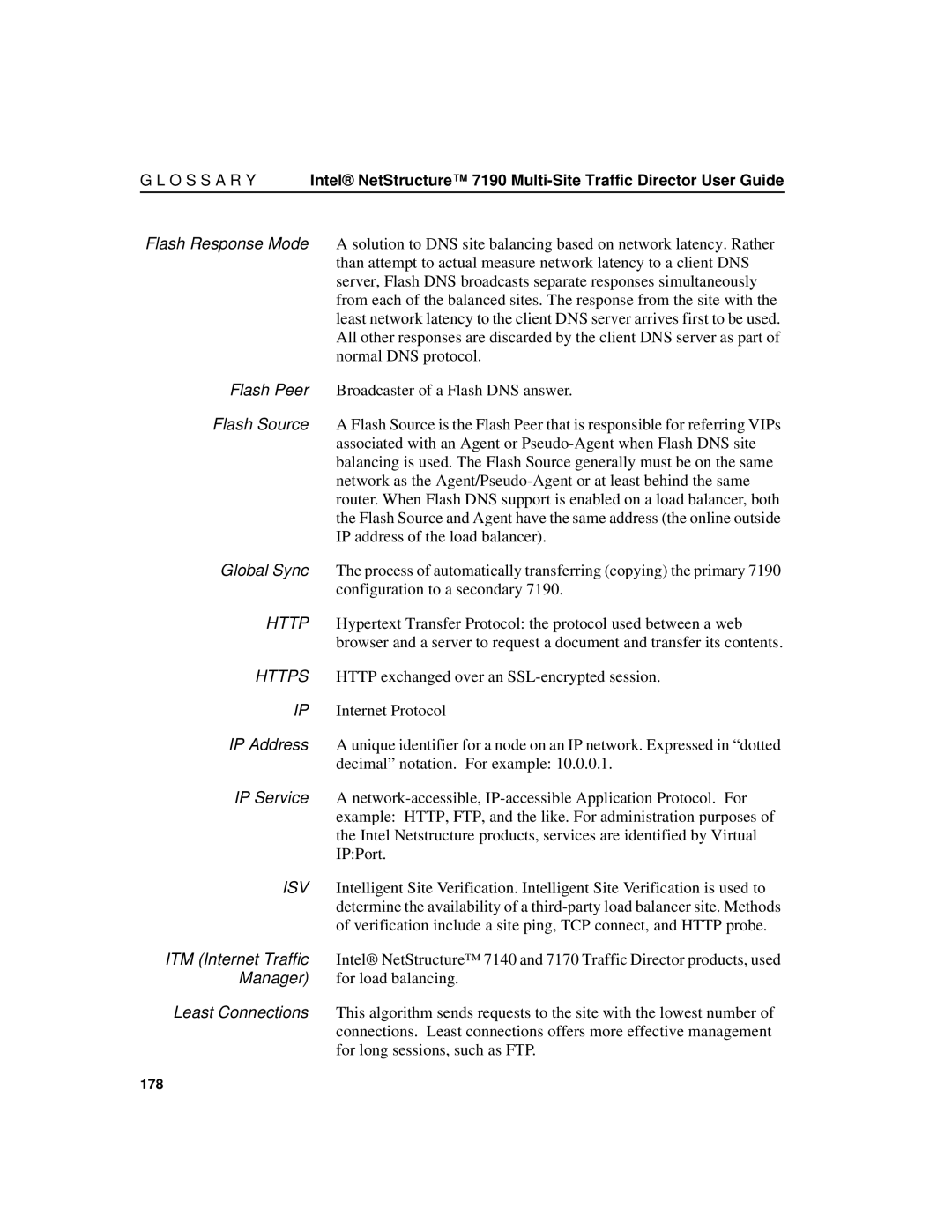G L O S S A R Y Intel® NetStructure™ 7190
Flash Response Mode | A solution to DNS site balancing based on network latency. Rather |
| than attempt to actual measure network latency to a client DNS |
| server, Flash DNS broadcasts separate responses simultaneously |
| from each of the balanced sites. The response from the site with the |
| least network latency to the client DNS server arrives first to be used. |
| All other responses are discarded by the client DNS server as part of |
| normal DNS protocol. |
Flash Peer | Broadcaster of a Flash DNS answer. |
Flash Source | A Flash Source is the Flash Peer that is responsible for referring VIPs |
| associated with an Agent or |
| balancing is used. The Flash Source generally must be on the same |
| network as the |
| router. When Flash DNS support is enabled on a load balancer, both |
| the Flash Source and Agent have the same address (the online outside |
| IP address of the load balancer). |
Global Sync | The process of automatically transferring (copying) the primary 7190 |
| configuration to a secondary 7190. |
HTTP | Hypertext Transfer Protocol: the protocol used between a web |
| browser and a server to request a document and transfer its contents. |
HTTPS | HTTP exchanged over an |
IP | Internet Protocol |
IP Address | A unique identifier for a node on an IP network. Expressed in “dotted |
| decimal” notation. For example: 10.0.0.1. |
IP Service | A |
| example: HTTP, FTP, and the like. For administration purposes of |
| the Intel Netstructure products, services are identified by Virtual |
| IP:Port. |
ISV | Intelligent Site Verification. Intelligent Site Verification is used to |
| determine the availability of a |
| of verification include a site ping, TCP connect, and HTTP probe. |
ITM (Internet Traffic | Intel® NetStructure™ 7140 and 7170 Traffic Director products, used |
Manager) | for load balancing. |
Least Connections | This algorithm sends requests to the site with the lowest number of |
| connections. Least connections offers more effective management |
| for long sessions, such as FTP. |
178
